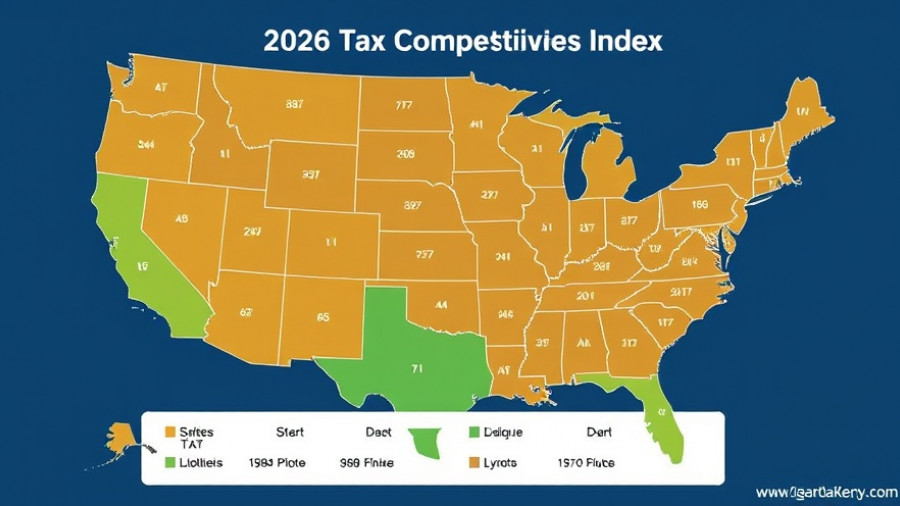
Understanding the 2026 State Tax Competitiveness Index
The recent release of the 2026 State Tax Competitiveness Index has provided a clear picture of the evolving tax landscape across the United States. Previously known as the State Business Tax Climate Index, this updated version seeks to offer a more comprehensive look at overall tax competitiveness rather than just focusing on business taxes.
Unlike prior editions, this year's Index includes over 150 variables that encompass individual income taxes, corporate taxes, sales and excise taxes, property taxes, and unemployment insurance taxes. This approach not only reflects how well states are structured to attract business but also serves as an invaluable tool for policymakers aiming for effective tax reforms.
Key Rankings and Changes in States' Tax Structures
According to the Index, the top rankings are held by states with no income tax—the likes of Wyoming, South Dakota, New Hampshire, Alaska, and Florida. States like Indiana and Idaho also feature prominently, despite taxing all major economic areas, indicating that a well-structured tax system can compete effectively even among states that levy high tax rates. Conversely, the bottom of the Index is led by states such as New York, New Jersey, and California, known for having high and complex tax structures that can deter business.
Why Tax Structure Matters
The results of the Index should matter to more than just policymakers; they resonate with business owners and potential entrepreneurs seeking a conducive environment for investment and growth. A competitive tax structure encourages capital flow by minimizing taxation on essential business inputs, ultimately aiding in job creation and economic expansion.
Historically, states that maintain simplicity and neutrality in their tax structures have fared better economically. For instance, states benefiting from lower property taxes or those without excessive taxes on corporate income attract more businesses, as seen with recent tax reforms in Louisiana and Iowa, which have improved their overall standings significantly.
The Future of Tax Competitiveness
As states navigate the complexities of tax reform in light of changing economic landscapes—such as the impacts of remote work and the global pandemic—adjustments in tax codes can swiftly shift the competitive edge from one state to another. Future editions of the Index are likely to reveal how states adapt to new challenges, particularly concerning taxes on digital products and services, which are poised to become a larger part of the economy.
Understanding how your state measures up in terms of tax competitiveness is crucial in today's economic climate. For business leaders, the 2026 State Tax Competitiveness Index is more than just a report; it's a tool to navigate potential opportunities and strategize for growth.
 Add Row
Add Row  Add
Add 

 Add Row
Add Row  Add
Add 



Write A Comment